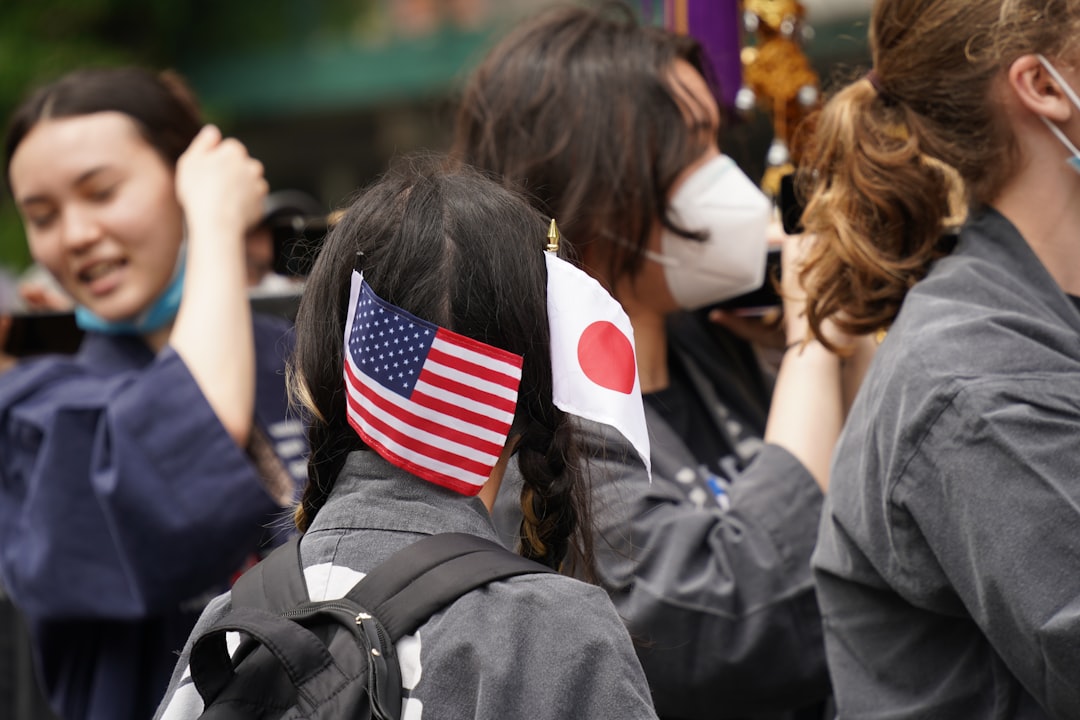Explore Japan-U.S. Deal: Investment Insights for Beginners
Discover key investment insights from the recent Japan-U.S. deal. Uncover unanswered questions and boost your financial knowledge today.
Introduction
Background of the Deal
The recent agreement between Japan and the United States marks a significant milestone in the bilateral relations between the two nations. This deal, characterized by its scope and ambition, aims to strengthen economic ties and foster collaboration across various sectors.
As two of the world’s largest economies, Japan and the U.S. have long shared a strategic partnership, and this new agreement is seen as a continuation of that legacy.
Key Components of the Agreement
The deal encompasses a range of areas, including trade, technology, and environmental initiatives.
It seeks to address mutual concerns such as market access, regulatory standards, and the promotion of sustainable practices. By focusing on these key components, both countries aim to enhance economic growth and innovation while ensuring that their industries remain competitive on the global stage.
Unanswered Questions
Despite the positive reception of the deal, several unanswered questions remain.
One of the primary concerns is the specific details regarding implementation and enforcement. Stakeholders from both countries are eager to understand how the provisions will be put into practice and what mechanisms will be in place to ensure compliance.
Additionally, there are questions about the potential impact on existing trade relationships with other nations.
As Japan and the U.S. deepen their partnership, there is speculation about how this might affect their respective trade agreements with other countries, particularly in the Asia-Pacific region.
Implications for Global Trade
The deal between Japan and the U.S.
has significant implications for global trade dynamics. As these two economic powerhouses collaborate more closely, there could be shifts in global supply chains and trade policies.
Observers are keen to see how this agreement will influence international trade norms and whether it might set a precedent for future bilateral deals.
Moreover, the agreement could serve as a catalyst for other nations to pursue similar partnerships, potentially reshaping the landscape of international trade in the coming years.
Explanation
The Context of the Deal
Japan’s recent agreement with the United States marks a significant milestone in international relations, focusing on trade, security, and technological collaboration. This deal is seen as a strategic move to strengthen bilateral ties and address mutual concerns in the Asia-Pacific region.
The agreement encompasses various sectors, including agriculture, digital trade, and defense, reflecting a comprehensive approach to partnership.
Trade and Economic Implications
The trade component of the deal aims to open up new markets for both countries, reducing tariffs and promoting fair trade practices. For Japan, this means greater access to American agricultural products, while the U.S.
benefits from reduced tariffs on industrial goods. This aspect of the deal is expected to boost economic growth and create jobs, but it also raises questions about the impact on local industries and the balance of trade.
Security and Defense Cooperation
Security is a pivotal element of the agreement, with both nations committing to enhanced defense collaboration.
This includes joint military exercises, intelligence sharing, and technological development in defense systems. The deal is perceived as a response to regional threats, particularly from North Korea and China, but it also prompts questions about the long-term strategic objectives and the potential for escalating tensions in the region.
Technological Advancements and Digital Trade
In the realm of technology, the deal emphasizes cooperation in emerging fields such as artificial intelligence, cybersecurity, and digital trade.
This collaboration aims to set global standards and ensure the secure exchange of information. However, it raises unanswered questions about data privacy, the regulation of digital markets, and the protection of intellectual property.
Environmental and Social Considerations
While the deal focuses heavily on economic and security aspects, environmental and social implications are also crucial.
Both countries have committed to addressing climate change and promoting sustainable development. The agreement includes provisions for environmental protection, but details on implementation and enforcement remain unclear, leaving questions about the effectiveness of these measures.
Implications for Japan
Economic Growth and Trade Opportunities
The recent agreement between Japan and the U.S.
opens up a plethora of economic opportunities for Japan. By reducing tariffs and enhancing trade relations, Japanese industries can expect increased access to the vast U.S.
market. This could lead to a surge in exports, particularly in sectors such as automotive, electronics, and agriculture.
The deal is likely to stimulate economic growth, providing a much-needed boost to Japan’s GDP and potentially leading to job creation within these key industries.
Technological Advancement and Innovation
Another significant implication of the deal is the potential for technological collaboration. With the U.S.
being a leader in technology and innovation, Japan stands to benefit from shared research and development initiatives. This partnership could accelerate advancements in fields like artificial intelligence, robotics, and renewable energy.
By leveraging American technological expertise, Japan can enhance its own capabilities, fostering an environment conducive to innovation and development.
Geopolitical Dynamics
The agreement also carries geopolitical implications for Japan. Strengthening ties with the U.S.
could shift regional power dynamics, particularly in relation to China. As Japan aligns more closely with the U.S., it may find itself in a more favorable position to navigate complex regional issues.
This partnership could serve as a strategic counterbalance to China’s growing influence in Asia, reinforcing Japan‘s role as a key player in regional security and diplomacy.
Domestic Policy Adjustments
On the domestic front, Japan may need to make policy adjustments to fully capitalize on the benefits of the deal. This could involve revising regulations to accommodate increased foreign investment and ensuring that domestic industries remain competitive.
Additionally, Japan may need to address potential concerns from local businesses and stakeholders who could be affected by increased competition from U.S. companies entering the Japanese market.
Environmental and Social Considerations
The deal also necessitates careful consideration of environmental and social impacts.
As trade volumes increase, Japan must ensure that environmental standards are upheld to prevent negative ecological consequences. Furthermore, the government should address social implications, such as workforce displacement or inequality, by implementing policies that support affected communities and promote sustainable development.
Considerations for the U.S.
Economic Implications
The trade agreement between Japan and the U.S.
opens new avenues for economic growth, but it also poses challenges that need careful navigation. The U.S.
must assess the impact on domestic industries, particularly in sectors where Japan holds competitive advantages. Ensuring that American businesses can compete on a level playing field is crucial to maximizing the benefits of the deal.
Additionally, the agreement may influence the U.S.
trade balance with Japan. Policymakers must consider strategies to mitigate potential trade deficits while fostering a mutually beneficial economic relationship.
This involves not only tariff adjustments but also addressing non-tariff barriers that could hinder U.S. exports.
Geopolitical Dynamics
The U.S.-Japan trade deal extends beyond economics, influencing geopolitical dynamics in the Asia-Pacific region.
Strengthening ties with Japan can serve as a counterbalance to China’s growing influence, but it requires a nuanced approach to regional diplomacy. The U.S.
must ensure that its actions do not inadvertently escalate tensions or alienate other key partners in the region.
Moreover, the deal could set a precedent for future agreements with other nations. The U.S.
needs to consider how this partnership aligns with its broader foreign policy objectives, particularly in promoting stability and security in the region.
Technological Collaboration
One of the key areas of focus in the U.S.-Japan agreement is technological collaboration. As both nations are leaders in innovation, there is significant potential for joint ventures in emerging technologies such as artificial intelligence, robotics, and clean energy.
However, the U.S. must ensure that intellectual property rights are adequately protected to foster a fair and competitive environment.
Furthermore, the U.S.
should consider how technological partnerships with Japan can enhance its own capabilities while safeguarding national security interests. This involves a careful evaluation of technology transfer agreements and the establishment of robust cybersecurity measures.
Environmental Considerations
The trade deal also presents opportunities for collaboration on environmental issues.
Both the U.S. and Japan have committed to addressing climate change, and the agreement could facilitate joint initiatives in sustainable development and green technology.
However, it is essential for the U.S. to ensure that environmental standards are upheld and that economic growth does not come at the expense of ecological sustainability.
By integrating environmental considerations into the trade framework, the U.S.
can promote a more sustainable economic model that benefits both nations and sets an example for global trade practices.
FAQ
Q1: Is investing in the Japan-U.S. deal safe for new investors?
A1: Investing in international deals like the Japan-U.S. agreement can offer exciting opportunities, but it’s essential to understand the risks involved. While such deals can potentially lead to economic growth and increased market opportunities, they also come with uncertainties, such as political changes, currency fluctuations, and regulatory differences. New investors should conduct thorough research, consider diversifying their portfolios, and possibly consult with a financial advisor to assess their risk tolerance and make informed decisions.
Q2: What kind of returns can new investors expect from the Japan-U.S. deal?
A2: The expected returns from investing in the Japan-U.S. deal can vary significantly based on several factors, including the sectors involved, market conditions, and the investor’s specific strategy. While the deal might open up new avenues for growth and profitability, it’s crucial to remember that returns are not guaranteed and can be influenced by external factors. New investors should set realistic expectations, focus on long-term growth, and stay informed about market developments to optimize their investment outcomes.
Q3: When is the best time for a new investor to start investing in the Japan-U.S. deal?
A3: Timing the market can be challenging, especially for new investors. The best time to start investing is typically when you have a clear understanding of your financial goals, risk tolerance, and have conducted adequate research on the investment opportunity. It’s important to stay updated on news related to the Japan-U.S. deal and monitor any developments that might impact the market. Starting with a small investment and gradually increasing your exposure as you gain confidence and knowledge can be a prudent approach.
Takeaway
Ready to start your investment journey with confidence? Explore beginner-friendly investment platforms, sign up for our weekly tips, or try out our free calculator and planning tool today. Take the first step towards financial empowerment and secure your future. Your journey to financial success begins here. As outlined in Reuters’ recent publication,











Comments